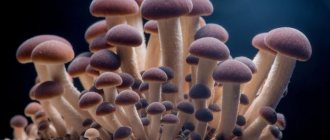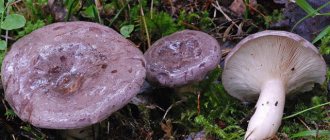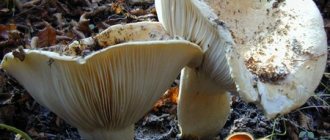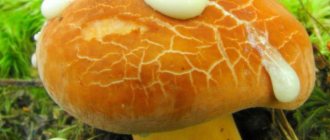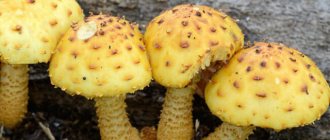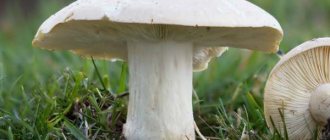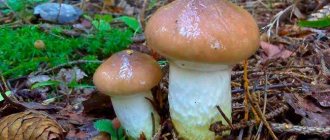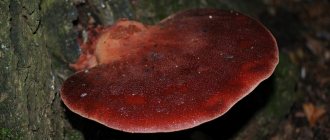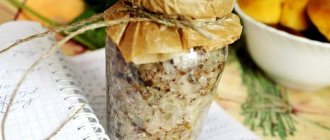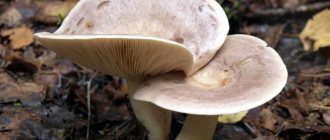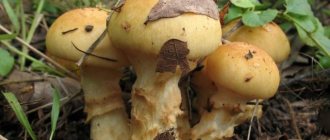Medical indications
Many people who are far from medicine believe that ordinary speckled oakwood is only suitable for preservation or cooking.
But pharmaceutical specialists often resort to his help. The reason for this is its rich composition, which includes many different microelements of a restorative nature. Based on a whole bunch of useful qualities, boletol was created, which is one of the most famous antibiotics in modern medicine. It promotes inhibition and subsequent neutralization of various pathogens.
Another significant contribution to pharmaceuticals was beta-gluconates. They are considered the main assistants of the immune system. They even work as a prevention of malignant neoplasms.
An edible healer is suitable for mental workers, students, and schoolchildren. We have amino acids to thank for this, as they have a positive effect on:
- coordination of movements;
- memory;
- mental activity.
To be able to concentrate on complex tasks, the brain must receive adequate amounts of proper nutrition, the important elements of which are amino acids. They also act as a guarantor of reducing the risk of developing atherosclerosis.
Ancient healers often resorted to proven oak-based remedies when they needed to cure:
- depression;
- overwork;
- nervous disorder.
Even today, herbalists use recipes from those years.
When to pick milk mushrooms?
If you decide to go in search of a milk mushroom, then you should consider the following: as a rule, this mushroom grows in lowlands, because they do not like dry soil. If sandy or dry soil predominates in the forest where you are going, then you don’t have to look for milk mushrooms there.
Collection of milk mushrooms
Now let's figure out exactly when it is necessary to collect these mushrooms. It all depends on their variety:
- Look for oak or aspen mushrooms at the end of July and until the end of September
- It is better to look for blue milk mushrooms closer to August and until the end of this month
- You can start collecting yellow and pepper milk mushrooms from mid-summer until the end of August
- If you want to find the black species, then head into the forest in July. They will grow there until September
Of course, the terms that we have offered you are considered only conditional. Remember that when you collect these mushrooms, make sure that the forest is sufficiently moist. Because milk mushrooms do not grow in dry soil.
In addition, take a closer look at the local vegetation. If you notice horsetail, then you will not find mushrooms in this area. This plant is considered the first sign that the soil in this forest is acidic. But milk mushrooms don’t like such soil.
Interesting Facts
All information about the genus of milk mushrooms is fully applicable to the blue milk mushroom:
- All milk mushrooms are very nutritious and rich in vitamins and amino acids, and therefore can replace meat.
- These mushrooms can be eaten by people with diabetes, since milk mushrooms do not affect blood sugar.
- Salted milk mushrooms acquire anti-inflammatory properties.
- Milk milk prevents the formation of stones in the gall bladder and kidneys.
- In particular, some sources call dog milk mushroom the best antibiotic (from edible mushrooms).
- Milk mushrooms contain vitamin D, which helps the body absorb calcium and has a beneficial effect on the condition of nails and hair.
- Milk mushrooms are used in folk recipes for pulmonary diseases.
At the same time, milk mushrooms, including this type, should not be given to children up to school age, since their digestion is difficult due to the presence of a large amount of chitin. For the same reason, those who suffer from digestive problems should not eat mushrooms. Also, if you have had allergic reactions to mushrooms before, you do not need to use them again.
Salting milk mushrooms requires adherence to a certain technology, since errors in the recipe can lead to the introduction of clostridia bacteria, which produce botulinum toxin, which, when ingested, causes a deadly disease - botulism.
Types of mushroom
White breast: This type is the most common. They look for it in forests with birch trees - these can be deciduous and mixed forests. The search begins in July and ends in early autumn. The diameter of the cap is no more than 20 cm. The color is white or yellow. The stem of the mushroom is up to 6 cm long and 5 cm thick, smooth, white. The main advantage of this species is that it most often grows in whole groups. Mushrooms hide under the leaves. In cooking, this type is used only for pickles.
Yellow breast: a rather rare species. It differs from the previous version in its intense yellow color. The edges of the cap are covered with reddish scales. This mushroom is also salted.
Irina Selyutina (Biologist):
The skin on the cap of the milk mushroom is golden or dirty yellow in color, sticky or slimy; in addition, it may have fibers on it, making it “woolly.” Like other milk mushrooms, there are concentric zones; they are hardly noticeable in representatives of the species. When pressing at the site of damage, a slight browning of the surface is observed. The pulp is white, very dense, but at the same time brittle, has a pungent taste and pleasant aroma of fruit, and turns yellow when cut. The milky sap is white, but when exposed to oxygen in the air it turns grayish-yellow. The leg is sticky on the outside and has a cavity inside. Its whitish surface is completely strewn with bright yellow pits.
This species is a mycorrhiza-former that enters into symbiosis with representatives of coniferous tree species, giving preference to spruce and also with birch trees. As places of residence, it prefers coniferous tracts, represented by spruce and fir, and is less common in birch forests. Often settles in mountain forests. Fruits from July to October.
The breast is blue: the flesh is dense, yellowish in color, has a mushroom smell and an islandy taste. The milky white juice that comes out of the mushroom when cut opens becomes dark and purple over time.
Aspen milkweed: relatively rare, it grows in forests with poplars, but most often near aspens. This mushroom has a white cap, occasionally with pinkish spots. The skin is covered with a small fluff. In humid weather it becomes sticky. Mycorrhiza-forming plant, forms a fungal root with willows, aspens and poplars. It is salted before use.
Black breast: got its name due to the presence of a brown center and the same edges of the cap. When cooked, the color gradually turns red. The pulp is white, turning gray when crushed. Found in mixed forests and birch forests. The mushroom is ideal for pickling.
Irina Selyutina (Biologist):
Black milkweed is sometimes confused with another conditionally edible species - black milkweed. However, you can find differences:
- Habitat: G. black is found in mixed forests and birch forests, and P. black is found in coniferous tracts.
- Hat:
- the color of the cap: on the black it is dark olive, and on the podgrudka it is dirty brown;
- edge of the cap: black is characterized by a felt edge of the cap; in the cap, the entire surface of the cap is smooth;
- the surface of the cap: in g. black it has weakly noticeable concentric zones (sometimes there are none), the skin is mucous. Pogruzdka has a slightly sticky skin; there are no concentric zones of a darker color.
- Pulp: in black it is white, turning gray when cut. Podgradka is characterized by the presence of a pinkish color, which darkens with age and turns black when cut.
- Milky juice: in Pogruzdka it is absent, in Mr. Black it is very abundant and has a very pungent taste.
- The plates of the hymenophore: the plates of the podgrudka are black-gray, and those of the black are light.
- Coloring after salting: the milk mushroom turns black, and the milk mushroom becomes purple-burgundy.
Pepper milk mushroom: This type of milk milk is characterized by a blue tint of the flesh when cut. The hat can be smooth or slightly velvety. It grows in oak forests, most often found in the Caucasus. The species is characterized by variations in the color of the cap: it can be white or cream. The plates can also change their color from white to cream. Dried and powdered mushroom can be used instead of pepper.
Main types of milk mushrooms
Real breast milk (Lactarius resimus)
Real breast milk (Lactarius resimus)
The most famous species with excellent taste. The cap is fleshy, at first spread out and then pressed in the center, with curved fringed edges, reaching a diameter of 20 cm. The skin is milky or yellow in color, sometimes with reddish spots, slimy in rainy or foggy weather.
The leg is smooth, up to 6 cm high, with frequent creamy-white plates descending onto it. The pulp is tight, white, with acrid juice, turning yellow at the break. This is the best species for pickles, in which the fruiting bodies take on a light blue tint.
Aspen milkweed (Lactarius controversus)
Aspen milkweed (Lactarius controversus)
Popular articles What are the benefits of fir cone tincture?
The cap is at first flat-rounded, with an elevation in the center, later concave, up to 30 cm in diameter, white, with reddish or purple streaks, slightly pubescent. The plates are dense, white with a pink tint, descending onto a dense stalk up to 8 cm high, which becomes narrower at the base. The pink tint of the plates is the main difference between this species and other laticifers.
The pulp is milky-white, with a fruity aroma; when crushed, it releases a caustic white liquid that does not darken in air.
Yellow breast (Lactarius scrobiculatus)
Yellow breast (Lactarius scrobiculatus)
A beautiful mushroom, with an appetizing golden cap up to 15 cm in diameter, concave in the center and fringed at the edges, slimy in the rain and glossy on a sunny day. The leg is strong, small, up to 5 cm tall, with a yellowish tint and patterned golden streaks or spots.
The often located plates are creamy and descend onto the stem. The pulp is juicy, a burning juice appears at the break, which then darkens. During collection and transportation, dark spots may appear at touch points.
Oak milkweed (Lactarius insulsus)
Oak milkweed (Lactarius insulsus)
The cap is spread out, then funnel-shaped with edges turned down, up to 12 cm in diameter. The skin is brown-orange, with a reddish tint, covered with brown spots. Yellowish plates descend on the stem of the same color.
The pulp is fleshy, creamy white, when broken it acquires a pink tint and releases a watery white liquid with a pungent taste and a slight mushroom odor. The mushroom is used for pickling and is considered conditionally edible.
Another name for oak milk mushroom is oak milk cap. If you are interested in learning more about saffron milk caps, read the article “Saffron saffron mushrooms.”
Black breast (Lactarius necator)
Black breast (Lactarius necator)
This dark mushroom is very tasty in pickles, acquiring a wine-like, reddish hue. The cap is rounded-flat, later sunken, up to 20 cm in diameter, brownish-yellow with an olive tint or dark green, the surface may be covered with concentric circles. The edges are curved, slightly fringed. The skin is slimy, especially in rainy weather.
A greenish sticky stalk up to 8 cm high, tight and full, becoming hollow towards the base, the surface is covered with dents. In the upper part, thinned plates of a yellowish-olive color descend on it. The white flesh is fleshy, greyish when crushed, releasing a milky liquid that turns purple when exposed to air. The cap is often dirty, the surface is covered with soil particles and debris, and it has to be scraped off before cooking.
White milk cap (dry milk mushroom) (Russula delica)
White podgrudok (Russula delica)
White cap is a tasty and aromatic type of russula, the cap is whitish-cream with brown streaks, up to 20 cm in diameter, rounded-convex and then concave. The plates are frequent, creamy-white, falling on a straight or slightly curved strong stem. The pulp is tight, creamy, with a subtle mushroom aroma and pungent taste.
The surface is usually covered with ingrown soil particles. In dry weather, dry fabrics can crack like parchment, which is why the padding gets its second name.
Description
Aspen milk mushroom (Lactarius controversus) is a mushroom of the Russulaceae family, genus Lactarius. In another way it is called poplar mushroom.
- The cap is fleshy, whitish in color with light pink spots, at a young age it has strongly curved edges and a depressed middle, later it straightens out and becomes widely funnel-shaped. It reaches 7-20 cm in diameter. In wet weather, the surface becomes sticky and slimy, which is why it becomes covered with specks.
- On the reverse side of the cap there are cream or light pink plates (an important identifying feature), slightly running down the stem.
- The short thick leg - 2-7 cm in height and 1.5-4 cm in diameter - has the same color as the cap, or whitish, with yellowish spots. Dense, often narrowed at the base.
- The pulp is white, with a fruity smell and abundant acrid white milky juice that does not change its color in the air.
Poplar milk mushrooms are classified as conditionally edible - they can only be eaten if they are pre-soaked, first of all, salted, and less often, fried and boiled.
Cooking
Thanks to its beneficial composition and excellent taste, this product is widely used in various areas of production.
There are a wide variety of methods for preparing subdubnik. But before preparing any dish, the fruiting bodies are boiled, since they are recognized as conditionally edible.
First, the mushrooms are washed twice in clean water. Then cut into pieces of the required size, transfer to a saucepan, add water, and add a little salt. You need to cook for 15 minutes, then boil again for the same amount of time. At each stage the water is changed.
Soup with subdubniks
- carrots and onions - 1 pc.;
- potatoes - 3-4 pcs.;
- boiled whole mushrooms - 5-6 pcs.;
- vegetable oil - 1-2 tbsp. l.;
- salt, spices - to taste.
The fruiting bodies are crushed into pieces, then transferred to a saucepan, filled with water, and simmered over low heat, remembering to periodically remove the foam. After this, salt and pepper to taste.
While the mushrooms are cooking, you can peel the onion, finely chop it, grate the carrots on a coarse grater, and fry it all in vegetable oil until golden brown.
Cut the potatoes into cubes and add them to the mushrooms along with the frying. Cook until the potatoes are fully cooked.
It is advisable to serve this soup with sour cream and chopped herbs (dill, parsley).
Marinated podduboviki
Podduboviki are delicious when marinated.
For pickling you need 1 kg of pre-boiled fruit bodies. Place them in a saucepan with water, add some salt, and cook for 15 minutes.
Then the broth is drained, poured again with clean water, a little salt, a couple of black peppercorns and a bay leaf are added, and boiled for the same amount of time.
Next, you need to prepare the marinade to your taste from water, salt, sugar and spices. Add 1-2 tbsp to it. vinegar and 2 pinches of citric acid (if your recipe does not call for citric acid, do not add).
How to cook aspen milk mushrooms
The mushroom has a characteristic taste and density, and therefore is used by chefs mainly for pickling and pickling.
Occasionally they use it for cooking roasts and almost never use it for making soups, since the decoction and the boiled mushrooms themselves are not as tasty as salted or pickled ones. The boiled product can be frozen, but it is not suitable for drying.
Like natural milk mushrooms, Lactarius controversus has a special body structure and therefore requires additional processing. Before preparing any dishes, the workpiece is thoroughly washed under the tap and then soaked in very salty water (2 tablespoons of rock salt per 1 liquid), getting rid of bitterness.
For soaking, use enamel buckets and pans without chips on the inner surface of the enamel. Preliminary preparation time takes at least 2 days. In this case, the water should be changed at least once every 2 hours to prevent fermentation.
Pickling
The classic pickling recipe looks like this:
- Freshly picked mushrooms are sorted, washed with a brush and soaked in cold water with salt (2 tablespoons per 1 liter) for at least 48 hours.
- Every 1-1.5 water is drained and replaced with a new composition.
- Prepared raw mushrooms are rinsed and generously rubbed with salt, after which they are placed in wooden or ceramic barrels, glass jars or enameled steel pans.
- Each layer is sprinkled with coarse salt, arranged with branches and leaves of cherry, currant or oak, as well as grated horseradish, garlic, dill seeds, etc.
There is no need to put down pressure or cover jars or buckets with lids. The top layer in any vessel should be salt. This prevents the development of pathogenic flora and does not allow air to penetrate inside the workpiece. Preparation time ranges from 40 days to 1.5 months.
Pickling
Milk mushrooms are suitable for preparing appetizers in a marinade. To do this, use mushrooms that have undergone heat treatment, that is, boiled after soaking. The marinade for milkfish should contain vinegar, salt and sugar. To add a special aroma, you can use garlic, black or allspice, as well as clove buds and bay leaves.
When serving, pickled mushrooms, just like salted ones, are generously poured with aromatic sunflower oil, sprinkled with dill and onions.
Cooking and frying
Mushrooms can be used to prepare vegetable stews, pies fillings, salads and cold appetizers. Lactarius controversus is rarely used for soups, because they need to be cooked for at least 1 hour, and improper preparation can cause poisoning.
Aspen milk mushrooms are a tasty and very healthy product. Their taste and pleasant density of pulp cannot be confused with other forest gifts. Despite some difficulties in preparation, mushroom pickers collect and store poplar milk mushrooms for future use with great pleasure.
Popular articles Description of Belobok spruce, its planting and plant care
Edibility
In Europe, milk mushrooms are classified as inedible mushrooms. In our country, it is allowed to be eaten after long-term culinary processing: soaking in a saline solution, boiling to remove the bitter taste and subsequent salting. Drying, frying and using them for preparing first courses is highly not recommended. Milk mushrooms have a third category of edibility. The methods chosen for culinary processing directly depend only on the taste preferences of the housewives.
If the mushroom is old, then it is better to avoid eating it; it can be life-threatening. It is better for novice mushroom pickers to take a more experienced consultant with them to avoid unpleasant consequences.
Mushrooms are subject to variability. The same type of mushroom, which grows in different conditions (temperature and soil composition), gives different indicators in laboratory studies in terms of toxicity.
Yellow breast
What’s interesting is that this milk mushroom is also sometimes called the “spruce mushroom” - both for its similarity with the previous one, and for its undisguised “love” for spruce trees. But there are also very noticeable distinctive features. Firstly, the taste: the yellow milk mushroom is in no way inferior to the real milk mushroom and is even somewhat superior to the blue milk mushroom. The second is the cap: usually it is a little duller in color and almost smooth, but the spruce mushroom has a noticeably pubescent edge. Finally, the third sign immediately catches the eye when picking mushrooms: the yellow mushroom does not turn blue when cut.
This mushroom grows mainly in spruce and spruce-fir forests. Loves calcareous soil. It is possible that this nuance is responsible for the fact that most yellow milk mushrooms are collected in mountain forests (in the Urals, for example, this is a clearly visible trend). It bears fruit from July to October, and apparently is somewhat more cold-resistant than other milk mushrooms.
Loader white
But this is not a milk mushroom at all, or even a milk mushroom, but a very ordinary russula, very similar to representatives of the noble milk mushroom breed. The main distinguishing feature is the absence of milky juice, for which this mushroom is often called “dry mushroom”. By the way, thanks to this remarkable circumstance, the flesh of the white mushroom does not have the acridity characteristic of milk mushrooms. Therefore, it can be cooked without prior soaking or boiling.
In terms of taste, it is considered the best of all loadings. Don’t believe Wikipedia, which claims that the mushroom supposedly has a “bland” taste - this is nothing more than the sofa rantings of amateurs who have only seen mushrooms in the supermarket. Dry milk mushrooms are very good, either pickled or fried with potatoes.
This fungus forms mycorrhiza with many trees. Loaders have been seen under birch, oak, beech, aspen, alder, pine and spruce. But, as practice shows, most of them grow in birch forests. Dry mushrooms bear fruit from July to August.
Abbas Gallyamov, political scientist:
“The voter now has a strong feeling that the entire political system of the country in general and Putin in particular are infinitely out of touch with the lives of ordinary people. They say that the president hovers in some infinitely distant geopolitical spheres and has no idea how ordinary citizens live. Apparently, the Kremlin decided to “land” the head of state by demonstrating him doing such a simple and understandable activity as picking mushrooms.
This will only have an effect on provincial housewives. The fact is that the claims of the advanced audience are fundamentally political in nature. This environment will not fall for such apolitical—purely image-building—things. People want the president to share power; they are tired of authoritarianism. You can’t satisfy such a request with mushrooms.”
Unique properties
The pulp of the mushroom itself contains substances that can enhance human immunity, as well as help cure malignant tumors of all types. Amino acids, which are also found in forest dwellers, improve memory and reduce the likelihood of atherosclerosis.
In addition, subdubnik contains fats, proteins, dietary fiber, vitamins, and nutrients. In some cases, vitamins A, C, B1 and B2, zinc, manganese, magnesium and iron are found in the pulp.
Poddubovik is perfect for those who are on a diet and want to lose a few extra pounds. Thanks to the tonic effect, which accelerates the metabolism in the body, appetite decreases. This promotes weight loss.
If by chance the poultice was eaten raw, you can get intestinal upset and diarrhea. Of course, it will not kill a person, but it can even lead to food poisoning, which is extremely undesirable. Therefore, you should eat only cooked, fresh and young mushrooms.
Nutritional quality
For 100 grams of mushrooms there are:
| Fats | 0.5 g |
| Squirrels | 1.8 g |
| Carbohydrates | 0.8 g |
| Calorie content | 16 kcal |
All representatives of the Russula family are rich in vitamin B, which serves as an excellent prevention of nerve problems.
Application
Milk mushrooms, according to the description, are used in the preparation of various dishes, as well as for medicinal purposes.
In cooking
Useful proteins in the mushroom make up more than 30%, so aspen milk mushrooms are much more filling than beef. It is better to salt it, although it is possible to cook other dishes. The main thing is to carry out the pre-treatment correctly, which will completely remove the bitterness.
In medicine
Milk mushrooms have also become widespread in pharmacological preparations. Some of their types are included in products that fight Koch's bacillus.
There are recipes, including for preparing a tincture of milk mushrooms for the treatment of lungs, kidneys, and diabetes.
Contraindications
Breast milk should not be eaten raw.
Aspen milk also has a number of contraindications. It is prohibited to use:
- people with stomach and intestinal problems;
- children under 7 years of age;
- suffering from pancreatitis.
It is also worth considering that the mushroom is difficult to digest due to the large amount of chitin. It cannot be consumed raw; it must be processed before cooking.
Real milk mushroom
The common mushroom, well known to everyone, is rightfully considered the king of salted mushrooms. Forms mycorrhiza with birch. It is not particularly picky about the type of soil, so theoretically it can grow in any forest where the above-mentioned tree is found - be it in birch forests or mixed forests. In pure pine and spruce forests, where birch is completely absent, milk mushrooms can also be found, but extremely rarely and in single specimens. However, it has long been noticed that even in forests with birch, this mushroom is found not just anywhere, but prefers special places known only to it.
To identify and find them, you need some experience. Including the “smell” of breast milk. The previous sentence was not inserted for the sake of a catchphrase, because mushroom spots in any forest have a characteristic smell that is emitted by the fruiting bodies and mycelium of the fungus. You can't confuse it with anything.
However, this is not the only sign. Real milk mushrooms love moderately light, moderately dry areas of the forest, always with the presence of some grass and shrubby undergrowth. It is useless to look for them in dark, damp corners, in swampy lowlands. Some kind of companion plants of the real milk mushroom have been noticed: bracken, wild strawberry, stone fruit.
The real milk mushroom begins to bear fruit closer to autumn, approximately when the average daily temperature on the soil surface reaches 8-10°C. In the middle latitude and a little to the north, the first milk mushrooms appear in July, in the southern regions - in August. The harvest season ends by the end of September.
Preparation
Pickling
The most interesting thing besides picking mushrooms in the forest is cooking. The pickling recipe is simple. All you need is a large amount of salt. Horseradish, cherries and dill are also added to the preparation.
Mushrooms are generously rubbed with salt and placed either in jars or wooden barrels.
Important! There are no tight lids on the jars; all microbes develop precisely under such conditions, which leads to poisoning. Also, the taste will be transformed by adding sugar to the marinade at the very end of salting.
Also, the taste will be transformed by adding sugar to the marinade at the very end of salting.
Salting time is approximately 40 days. During this time, the mushrooms will have time to marinate properly. But it is undesirable to overcook such jars, postponing their consumption until later. If they are stored for more than six months, you can get poisoned by eating them.
These mushrooms are not very suitable for preparing stewed or fried dishes; they are also rarely used to make soups, since aspen milk mushrooms require a long time of processing.
Milk mushrooms cannot turn out tasteless, as they are easy to prepare.
Note: to check whether the mushrooms are marinated enough, you need to try it. Chew the mushroom and feel; if it is not bitter, then rinse and cut large mushrooms.
Pickled milk mushrooms are usually served in oil or used in salads.
Raw milk mushrooms
Sort the mushrooms, peel and wash them. Soak in a salty solution, which will remove the bitterness. Mushrooms are poured with boiling water into containers and sent to the freezer.
Boiled milk mushrooms
Also peel and cook. After boiling, it should take about 10-15 minutes, then drain the water using a colander. The drier the mushrooms, the better they will taste when cooked. Also place in containers and place in the freezer.
Fried or stewed milk mushrooms
Chop the mushrooms, add oil and fry in a frying pan for 15-20 minutes with the lid closed. During the last few minutes, remove the lid to form a crust on the mushrooms. Place the finished mushrooms in containers and place in the refrigerator.
Mushroom poisoning. What to do?
Firstly, you can warn yourself by properly preparing mushrooms. It is not advisable to seal jars with tight lids and to freeze and store them properly.
Popular articles Rose Mimi Eden - characteristics of the variety
But you can give yourself first aid using the following methods:
- Drink a large amount of salt water or a special solution that will induce vomiting and thus clear the stomach.
- Take a laxative.
- Lie down and cover yourself with a blanket, as you may feel chills.
- Wait for a doctor and ambulance who will provide professional assistance.
Pickling bitters at home
It is believed that bitter milk mushrooms taste best when salted. There are two basic options for pickling these mushrooms, the so-called “cold” and “hot” methods.
Advice! For pickling, it is best to choose young, small-sized milk mushrooms that do not need to be cut into pieces.
It is believed that it is preferable to salt these mushrooms in a hot way, boiling them in brine with seasonings. In this case, they become elastic and break less.
To prepare this pickling, you should take:
| Milk mushrooms | 1 kg |
| Table salt | 2 tbsp. l. |
| Water | 1 l |
| Seasonings (dill umbrellas, garlic cloves, currant leaves, horseradish, cherries) | Taste |
- Place peeled and soaked bitter mushrooms in a saucepan, add water and boil for 10 minutes.
- Drain the mushrooms in a colander and rinse immediately with clean cold water (this will crisp them up).
- Prepare a brine from water and salt. Boil it, put the mushrooms in there and boil for about 15 minutes.
- Place some of the seasonings on the bottom of the prepared container (enamel pan or bucket). It is advisable to first rinse the greens with boiling water before making pickles. Arrange mushrooms in layers, alternating them with dill and garlic.
- Pour cooled brine, cover with a flat plate on top and press down with pressure.
- Place in a cool place for a couple of weeks. After waiting this time, the mushrooms can be served.
Salting bitter mushrooms in a cold way involves a longer period during which it is necessary to keep the mushrooms.
For this dish you will need:
| Milk mushrooms | 1 kg |
| Coarse salt (sprinkle over mushrooms) | 50 g |
| Table salt (for brine) | 60 g |
| Water (for brine) | 1 l |
| Seasonings (dill, garlic) | Taste |
- The mushrooms need to be prepared and soaked, then rinsed thoroughly with clean water and lightly squeezed.
- Place the bitters in prepared containers (jars) with their caps down, sprinkling each layer with salt and seasonings.
- After filling the jar, place herbs and garlic on the very top. If there is not enough liquid from the mushrooms, prepare additional brine and add it to the container.
- Place a wooden circle on top and apply pressure. Place the jars in the cellar or refrigerator.
- You can try the finished pickling after two months.
Treatment
- It has already been said earlier that the type under discussion is classified as conditionally edible. That is, you cannot consume them as food without skipping the primary processing. Often these mushrooms are salted, and soaked before it. Otherwise, the milky juice will lead to bitterness.
- Soaking is carried out in a salty, cool and purified liquid, which is changed at frequent intervals. Otherwise, the contents of the container will begin to mold and sour. The duration of soaking is 2 days, the water is changed four times a day, or even more often. Next, you need to boil the specimens and start salting.
Chemical composition
Topolevka contains:
- vitamins of group B, A, C, PP, K, D2;
- selenium;
- phosphorus;
- calcium;
- copper;
- zinc;
- potassium;
- iron;
- manganese;
- polysaccharides;
- citric, tartaric and oxalic acids.
REFERENCE: In traditional medicine, a set of poplar rowan enzymes is used to produce medicines for tuberculosis and diabetes.
Where does bitterling grow (video)
So, you can’t take gall mushroom in food. It is inedible for humans. Since worms feast on it, and pests avoid it, it is worth thinking about the fact that it is not suitable for human food
Therefore, it is important to correctly distinguish the mushroom from other species so as not to be poisoned by it.
Fans of “silent hunting” are probably familiar with the gall mushroom - a type of inedible mushroom that can be confused with other varieties.
Due to its unsatisfactory taste, it cannot be eaten. To find out whether a gall mushroom is considered poisonous, you need to find out its description.
The growing location, external description and photo of this forest representative will help you easily find it in nature, and also not confuse it with other edible mushrooms.
The second name of this mushroom is bitterling, and it was not given by chance. Bitterweed is considered edible, but hardly anyone would want to actually eat it.
Due to its unusually bitter taste, it is not suitable for human consumption.
To better understand what this representative of the flora looks like, you can look at the photo.
Useful information and descriptions will help you get to know the forest guest better:
Appearance. The hat reaches sizes from 5 to 15 centimeters in diameter. It is cushion-shaped and has brown, yellow and chestnut colors. After rain the cap becomes sticky. The drawing shows that it has a long stem, up to 13 centimeters high, colored creamy.
Where it grows. The habitats of this individual vary widely, but in most cases it is found in the acidic soil of coniferous and deciduous forests. Gorchak also grows on rotten wood.
Time to grow. The gall fungus can be found throughout Europe and Asia; the longest period of its growth occurs at the end of June. Growth continues until the end of October.
Gorchak has a small number of doubles. According to Wikipedia, it is often confused with porcini mushroom.
Application
It is used in traditional medicine as a choleretic agent, and also for stones in the bladder - with caution.
It is worth noting that the particularly bitter taste of this forest representative does not allow even animals to eat it.
What do you need for this?
So, how to pickle aspen milk mushrooms? To do this you will need the following ingredients:
- freshly picked mushrooms;
- water (amount - see instructions below);
- coarse sea salt (see instructions below for quantities);
- optional - garlic, pepper, cherry or black currant leaves.
As already noted, when aspen milk mushrooms are raw, they are inedible and also have a bitter and unpleasant taste. They become safe and edible after boiling or soaking.
Peel the mushrooms with a knife and rinse under running water. Remove the stems from the caps and discard them (they are also edible, but have a tough consistency). Cut the milk mushrooms into pieces and weigh.
False milk mushrooms and doubles
Conditionally edible milk mushrooms and some similar species are not poisonous, but have an unpleasant taste. They are successfully used in cooking after preparatory treatment - prolonged soaking or boiling in lightly salted water.
Pepper milk mushroom
Pepper milk mushroom
Light mushrooms grow in clearings or rows in deciduous forests, rarely among conifers; they love dampness and dense shade. The cap is up to 20 cm in diameter, convex or flat, then concave, cream-colored, with a lighter shade along the edges; brown spots quickly appear at the site of damage.
The pulp is dense, but fragile; at the break, a viscous white liquid is released, the taste is acrid, with a taste of hot pepper. Eating is permissible in salted form and only after prolonged soaking with frequent changes of water. Dry powder from fruiting bodies is used as a spicy, hot seasoning.
Camphor milkweed (camphor milkweed)
Camphor milkweed (camphor milkweed)
Camphor milkweed often grows near conifers on damp, mossy soil and on decaying wood. The cap is 5–6 cm in diameter, convex, then concave, with a wavy edge, glossy, reddish-brown. The plates are pinkish, then brown, descending onto an even thin stalk up to 5 cm high, tuberous in shape at the bottom.
The pulp is brittle, loose, brick-brown, with a very strong, rather unpleasant smell of camphor or dry clover. At the break, a whitish juice is released that does not change color in air. The characteristic smell will prevent the mushroom from being confused with others, as well as being used as food.
Violin (felt weight)
Violin (felt weight)
In oak forests and birch forests from mid-summer to October you can find violin - a conditionally edible mushroom with a pungent taste that grows in large clearings. The white cap is fleshy, covered with villi, concave, later taking the shape of a funnel, with folded edges, up to 25 cm in diameter. The plates are creamy-white, sparse, descending onto a rounded stalk up to 8 cm high.
The pulp is white, fragile, and when broken it releases an acrid milky-white juice. The leg is almost completely buried in the ground, so only the violin caps are collected. Before cooking, they are soaked for a long time and then used for pickles.
Golden-yellow milkweed (golden milkweed)
Golden-yellow milkweed (golden milkweed)
In the dampness of coniferous or mixed forests, as well as in birch forests, golden milkweed, classified as a conditionally edible mushroom, grows singly or in clearings. The fleshy cap is light yellow, darkens and turns purple where touched, the velvety edges are curved down. The shape is prostrate, then concave, the surface is sticky. The plates are yellowish, frequent, descending on a pale yellow high stalk.
The pulp is creamy-white, secretes a caustic milky liquid with a pleasant odor. Suitable for pickles and preparing marinades after soaking or cooking.
